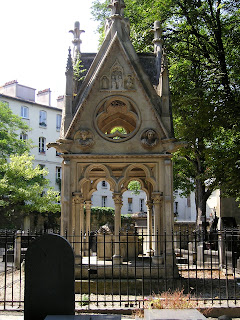This week will be having a library tutorial! No readings! I'm sure many of you will be excited about that!
Libraries though.............the bane of our existence or the lifeline to our work? A question for the ages......
I will be leading the library tutorial next week and the purpose is to help introduce you all to the research techniques and tips I have acquired over the years when it comes to writing essays in medieval history. For those of you who have had library tutorials already this year (perhaps led by a librarian), or those of you for whom library researching is old hat, please do still come along next week as the tutorial will be specifically geared towards helping you write the essay for this course.
Attendance is compulsory and you will be filling in a worksheet during the tutorial that I have prepared.
Here are all the details:
When: Wednesday, April 4th during your normal tutorial time
Where: Training Room One (ground floor), Caulfield library
Please arrive right on time as I will begin the tutorials promptly at the hour. This is because we have a lot of material to cover.
Here are some questions to think about before.....
1) What elements make up a good research essay?
2) How would you approach finding material and formulating your argument in your essay?
3) Can you find the book 'Charlemagne's Courtier' in the library catalogue? What other bibliographic information can you tell me about this book from the catalogue? Can you find another primary or secondary source related to Carolingian history? What methods did you use to find 'Charlemagne's Courtier'?
4) If you are in first year - What elements of the research essay are you feeling nervous or worried about? (ie. finding sources, knowing which material to reference in your essay, etc.)
5) If you are in second year and beyond - What are your tips and pointers that you can share with us on writing good essays and researching in the library? Have you ever received any feedback from previous essay submissions that have helped you improve your researching and writing skills?
Please have a think about these questions and post your thoughts on this week's library tutorial below!
.....
Essay Requirements
Word Limit: 1750
Due Date: Friday, 5pm the week after you give your presentation. You will find your chosen essay question at the bottom of the unit guide page for the week of your presentation.
You must include in your analysis:
2 primary sources
5 secondary sources - including one journal article
1 of your sources (either primary or secondary) must come from an online source
Any questions at all please just ask me.
....
For fun here are a couple of photos of the Bodleian Library (part of the University of Oxford). It is a very old library (founded in the 17th century) and was the centre of my existence for a year (and more) of my life! It's a beautiful set of buildings and rather puts our very practical libraries at Monash to shame!
 |
| The gatehouse (porter's lodge) with reading rooms above Bodleian Library |
 |
| The Radcliffe Camera Bodleian Library |
 |
| The interior of the Duke Humphrey Library Bodleian Library |










